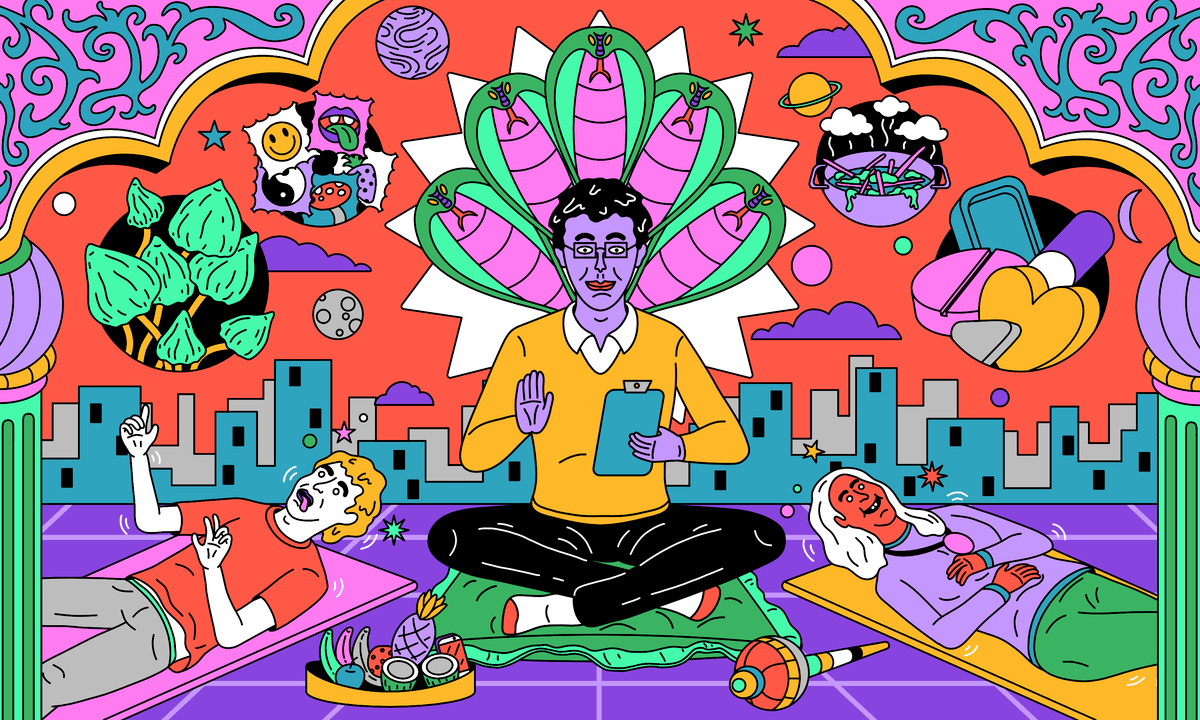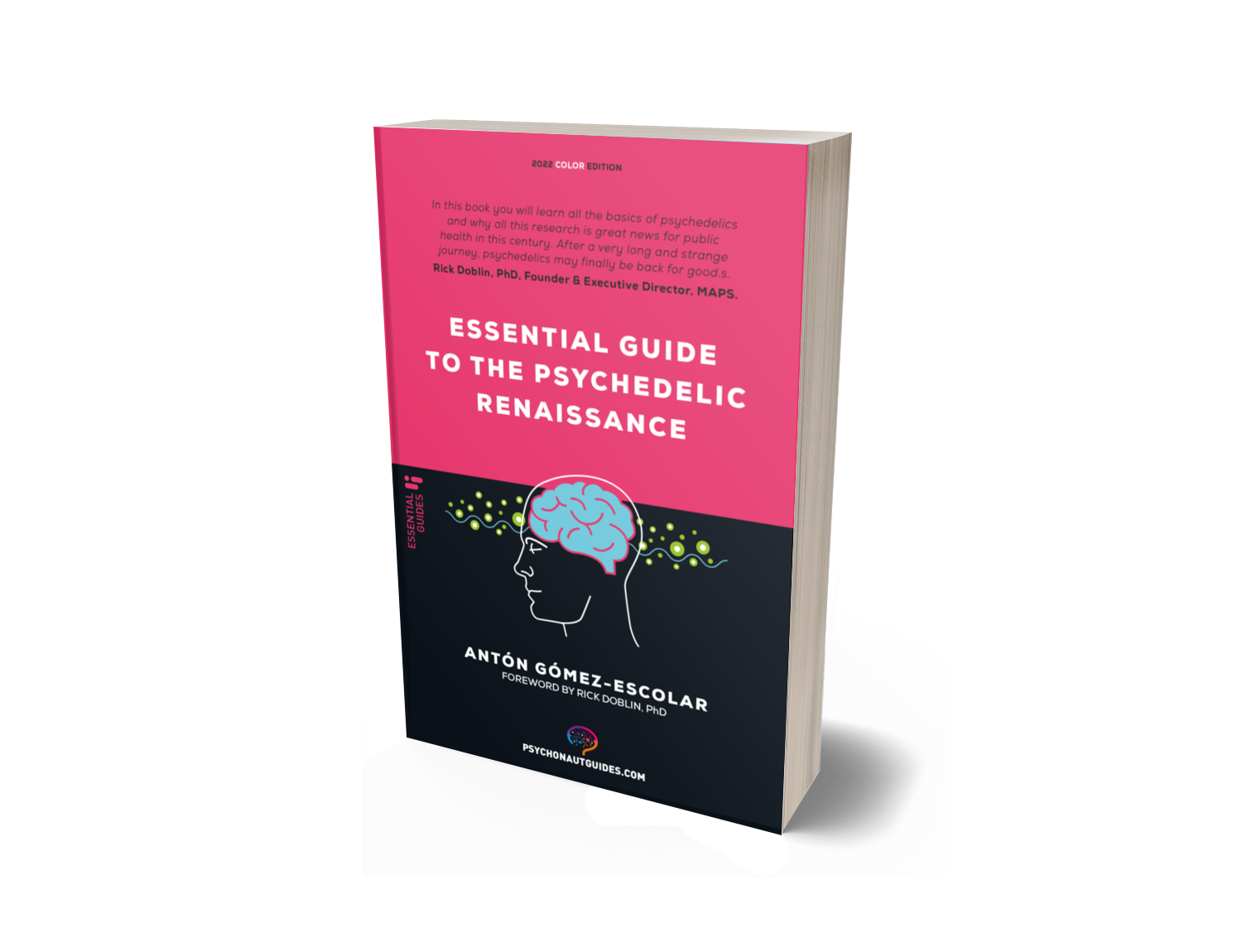By Gabriel García August 4, 2022
In our book series Psychonaut Guides we talk in depth about the most commonly used traditional psychedelics, but there are also other psychedelics of less common use and, among them, some are legal under certain circumstances. Here are 5 legal psychedelic substances you may not have known about.
1. HAWAIIAN BABY WOODROSE
Hawaiian Baby Woodrose (Argyreia nervosa) is a perennial climbing plant native to India, with large heart-shaped leaves and white stunted flowers. Its active compound is believed to be LSA, a naturally occurring psychedelic alkaloid that is the precursor to LSD. When compared to LSD, and despite having a similar chemical structure, the psychedelic experience of LSA is different. Typically its effects are milder than those of LSD, and in general it offers a more lucid and concentrated effect. While the extraction and possession of LSA is prohibited in most countries, Hawaiian baby woodrose is not.
2. MORNING GLORY
The name “Morning Glory” is used to refer to a group of more than 1,000 species of the family Convolvulaceae, flowers that grow in many parts of the world. Some morning glory species have been consumed for therapeutic and recreational purposes since ancient times, such as Turbina corymbosa and Ipomoea tricolor. They are also known by many other names, such as tlitliltzin or black badoh. There is evidence that morning glory was consumed as early as ancient Egypt, where it was used as a potent aphrodisiac. The main active ingredient of morning glory is believed to be LSA, which is similar to and a chemical precursor of LSD, although with a more moderate effect. It is not illegal to possess morning glory plants, and in fact they are often grown for ornamental purposes. However, it is illegal to extract or possess LSA, which is considered a controlled substance in most countries.

3. PASSIFLORA
Native to parts of the southeastern United States and Central America, passiflora is a genus of plants with more than 500 species. This broad group includes vines, shrubs and some varieties of trees. However, it is not the diversity of this species that makes passiflora a very tempting psychedelic, but the alkaloids contained in its leaves and roots. But what really interests us are the relaxing and calming properties of passiflora. Once dried, passiflora leaves are mixed with hot water to make an irresistible concoction that is believed to calm the nerves and inner restlessness. Fortunately, enjoying the relaxing influence of passiflora couldn’t be easier. Not only is it available in concentrated extract form, but it is also legal to prepare and consume. This herbal supplement can be taken as an infusion, liquid extract or tincture.
4. BLUE LOTUS
Travel back in time to ancient Egypt and the banks of the Nile, where this intoxicating water lily known as blue lotus (Nymphaea caerulea) was abundant. Commonly associated with festive settings and dancing, what the ancient Egyptians did not know is that the effects of blue lotus come from the psychoactive alkaloid aporphine, not to be confused with apomorphine (a much stronger substance). Aporphine is believed to interact with dopamine receptors. Blue lotus was, and still is, highly prized for its aphrodisiac character and its ability to calm the nerves. The combination of these effects made it an obvious choice for celebrating spiritual and magical initiation rites. Today, the same powers can be enjoyed with blue lotus extract, a substance that is legal in most countries.
5. KANNA
Kanna, not to be confused with cannabis, is a plant native to South Africa. Also known as channa or kougoed, its use dates back to prehistoric hunter-gatherers. Chewing kanna and swallowing the resulting saliva causes a mild psychedelic state that is believed to have enhanced the physical and mental endurance of our prehistoric ancestors. We have two pieces of good news, you no longer need to hunt it in the South African grasslands and you no longer have to chew it to consume it. This plant now comes in powdered form, whole plant, extract, and even tea. Take the time to prepare this potent psychedelic and you will feel the tension melt away in an instant.

You can read more information on the subject in the Essential Guide to the Psychedelic Renaissance, by Antón Gómez-Escolar. We also recommend Psychedelics and Mental Health, by Irene de Caso and Your Brain on Psychedelics, by Genís Oña, where you will learn the keys to the effects of psychedelics, capable of producing significant changes in the processes of perception, thought and consciousness. The book also includes a prologue written by one of the greatest eminences in this field, José Carlos Bouso, scientific director of ICEERS.
The book, like the rest of the Psychonaut’s Guide series, is now available on Amazon in physical and eBook format, as well as Apple Books. In addition, all titles are available in Spanish version on GuiasdelPsiconauta.com




